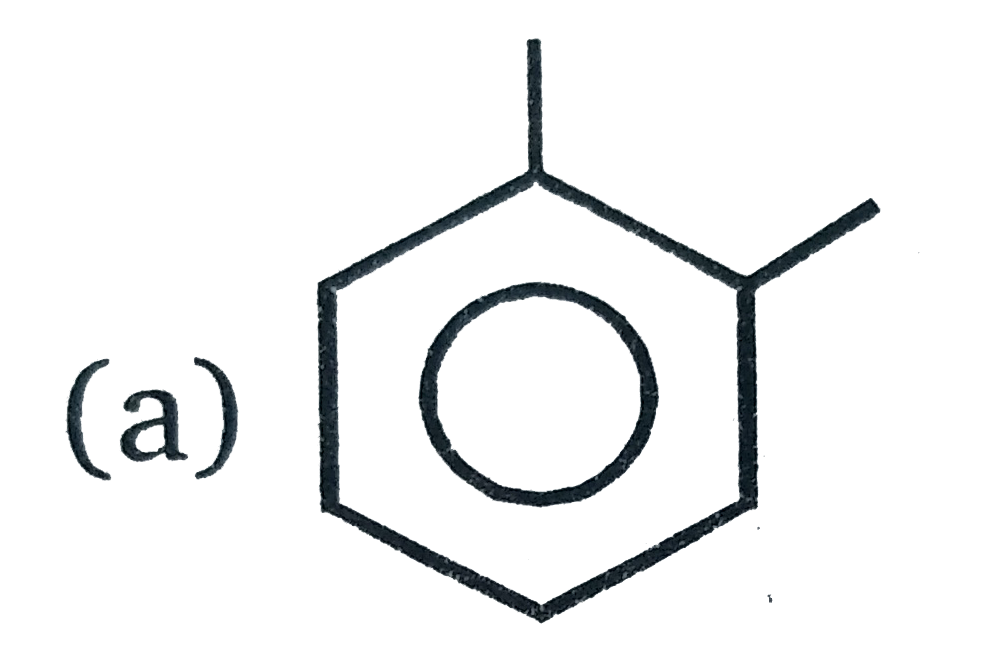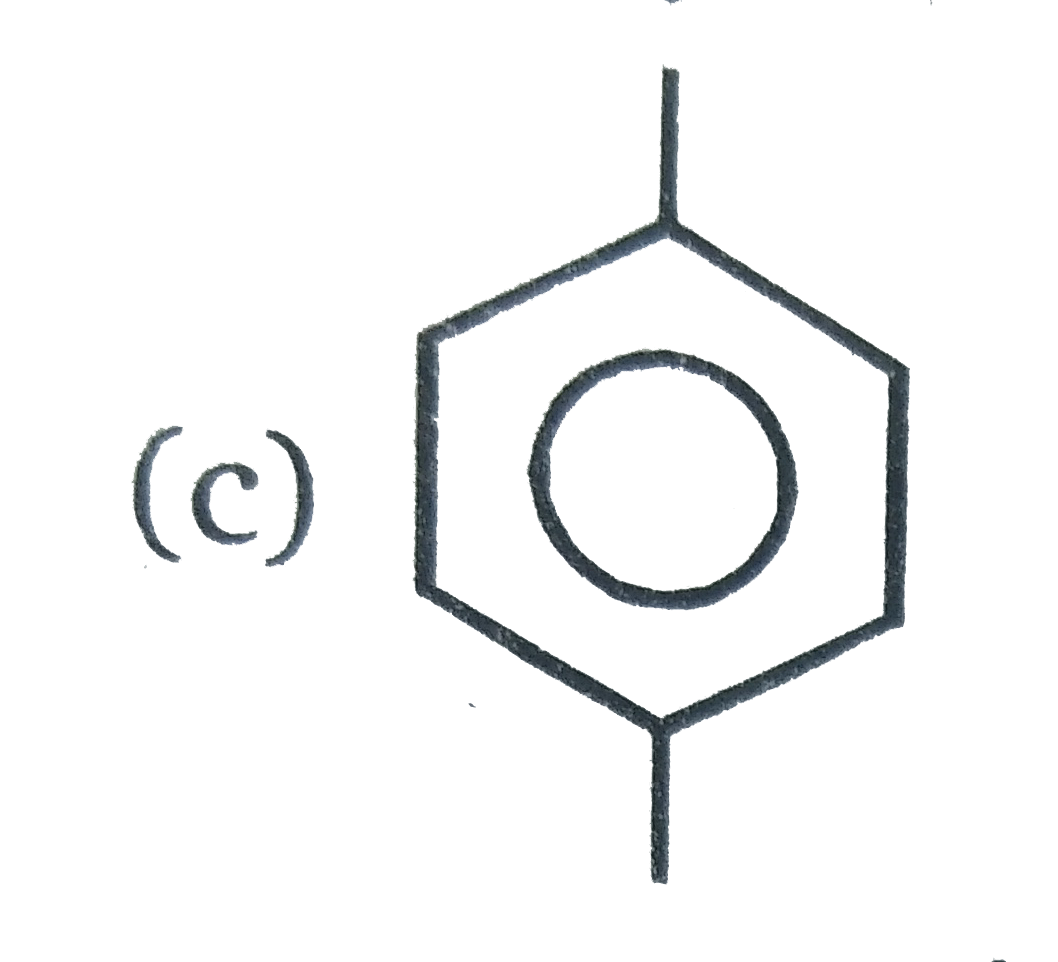Among the Xylenes ,which is theromdynamlly most satble ?



All are equally stable
The correct Answer is:B
To determine which xylene is thermodynamically most stable among ortho, meta, and para xylenes, we can analyze the resonance structures and the effects of the methyl (CH3) groups on the stability of each isomer.
1. Identify the Isomers:
- There are three isomers of xylene: ortho-xylene, meta-xylene, and para-xylene.
- Ortho-xylene has two methyl groups on adjacent carbon atoms, meta-xylene has them on carbons separated by one carbon, and para-xylene has them on opposite ends of the benzene ring.
2. Analyze Resonance Structures:
- For each isomer, we can draw resonance structures to see how the methyl groups influence the stability.
- In ortho-xylene, the methyl groups can create steric hindrance and destabilize the molecule.
- In meta-xylene, the methyl groups do not interact as much with the π system of the benzene ring.
- In para-xylene, the methyl groups are positioned such that they can effectively stabilize the benzene ring through resonance without significant steric hindrance.
3. Consider Electron Donating Effects:
- Methyl groups are electron-donating groups. They can stabilize positive charges through resonance.
- In ortho and para positions, the presence of a positive charge can be stabilized by the adjacent methyl group through resonance. However, in ortho-xylene, the close proximity of the two methyl groups can lead to steric strain.
- In meta-xylene, the electron-donating effect of the methyl groups is less effective because they are not in resonance with the positive charge.
4. Evaluate Stability:
- The steric hindrance in ortho-xylene makes it less stable compared to para-xylene.
- The para-xylene is more stable than meta-xylene due to better resonance stabilization and less steric hindrance.
- Therefore, para-xylene is the most thermodynamically stable isomer among the three.
5. Conclusion:
- Among ortho, meta, and para xylenes, para-xylene is the most thermodynamically stable due to optimal resonance stabilization and minimal steric hindrance.
Final Answer:
Para-xylene is the thermodynamically most stable isomer among the xylenes.
---
- There are three isomers of xylene: ortho-xylene, meta-xylene, and para-xylene.
- Ortho-xylene has two methyl groups on adjacent carbon atoms, meta-xylene has them on carbons separated by one carbon, and para-xylene has them on opposite ends of the benzene ring.
- For each isomer, we can draw resonance structures to see how the methyl groups influence the stability.
- In ortho-xylene, the methyl groups can create steric hindrance and destabilize the molecule.
- In meta-xylene, the methyl groups do not interact as much with the π system of the benzene ring.
- In para-xylene, the methyl groups are positioned such that they can effectively stabilize the benzene ring through resonance without significant steric hindrance.
- Methyl groups are electron-donating groups. They can stabilize positive charges through resonance.
- In ortho and para positions, the presence of a positive charge can be stabilized by the adjacent methyl group through resonance. However, in ortho-xylene, the close proximity of the two methyl groups can lead to steric strain.
- In meta-xylene, the electron-donating effect of the methyl groups is less effective because they are not in resonance with the positive charge.
- The steric hindrance in ortho-xylene makes it less stable compared to para-xylene.
- The para-xylene is more stable than meta-xylene due to better resonance stabilization and less steric hindrance.
- Therefore, para-xylene is the most thermodynamically stable isomer among the three.
- Among ortho, meta, and para xylenes, para-xylene is the most thermodynamically stable due to optimal resonance stabilization and minimal steric hindrance.
Para-xylene is the thermodynamically most stable isomer among the xylenes.
Topper's Solved these Questions
- BOOK - MS CHOUHANCHAPTER - GENERAL ORGANIC CHEMISTRYEXERCISE - LEVEL- 11videos
GENERAL ORGANIC CHEMISTRY
- BOOK - MS CHOUHANCHAPTER - FAMILIES OF CARBON COMPOUNDS: FUNCTIONAL GROUPS AND INTERMOLECULAR FORCES EXERCISE - ADDITIONAL OBJECTIVE QUESTIONS ( Matrix Match Type )4videos
FAMILIES OF CARBON COMPOUNDS: FUNCTIONAL GROUPS AND INTERMOLECULAR FORCES
- BOOK - MS CHOUHANCHAPTER - GRIGNARD REAGENTSEXERCISE - Level 1 (Q.61 To Q.66)1videos
GRIGNARD REAGENTS
Similar Questions
Knowledge Check
- Question 1 - Select One
Among the following, the one which is the most basic is
AZnOBMgOCAl2O3DN2O5 - Question 2 - Select One
Which among the following is the most stable carbocation ?
ACH3C+H2B+CH3C(CH3)3C+D(CH3)2CH+ - Question 3 - Select One
Among the following phenols which is most acidic?
APicric acidB2− NitrophenolC2,4− DinitrophenolDm− Nitrophenol
Among the following , which is most acidic?
View SolutionAmong the following which is most stabilised cation ?
View SolutionAmong the following, which compound is most acidic ?
View SolutionAmong pollutants which has the most lasting effect
View SolutionAmong pollutants which has the most lasting effect
View Solution

